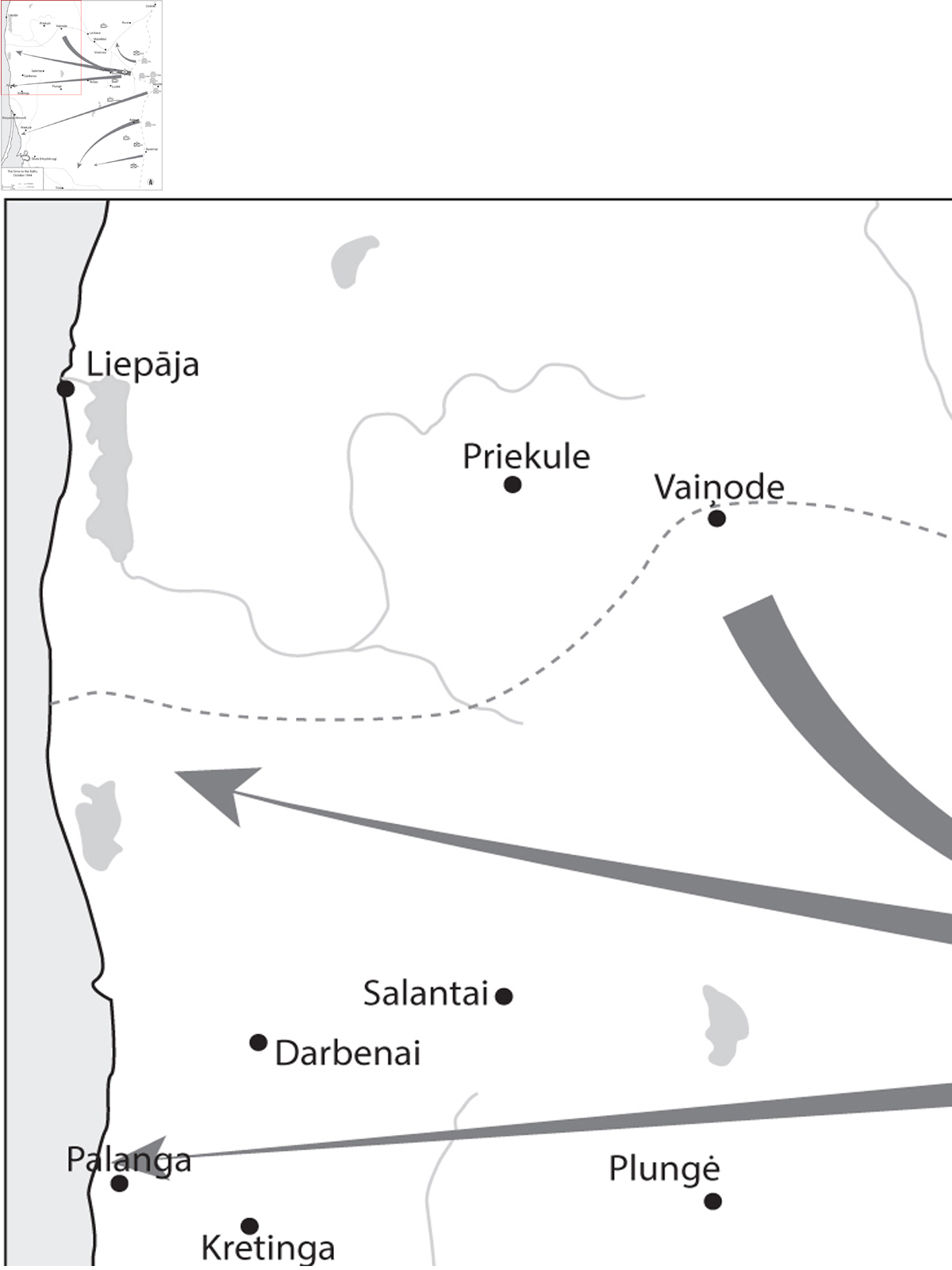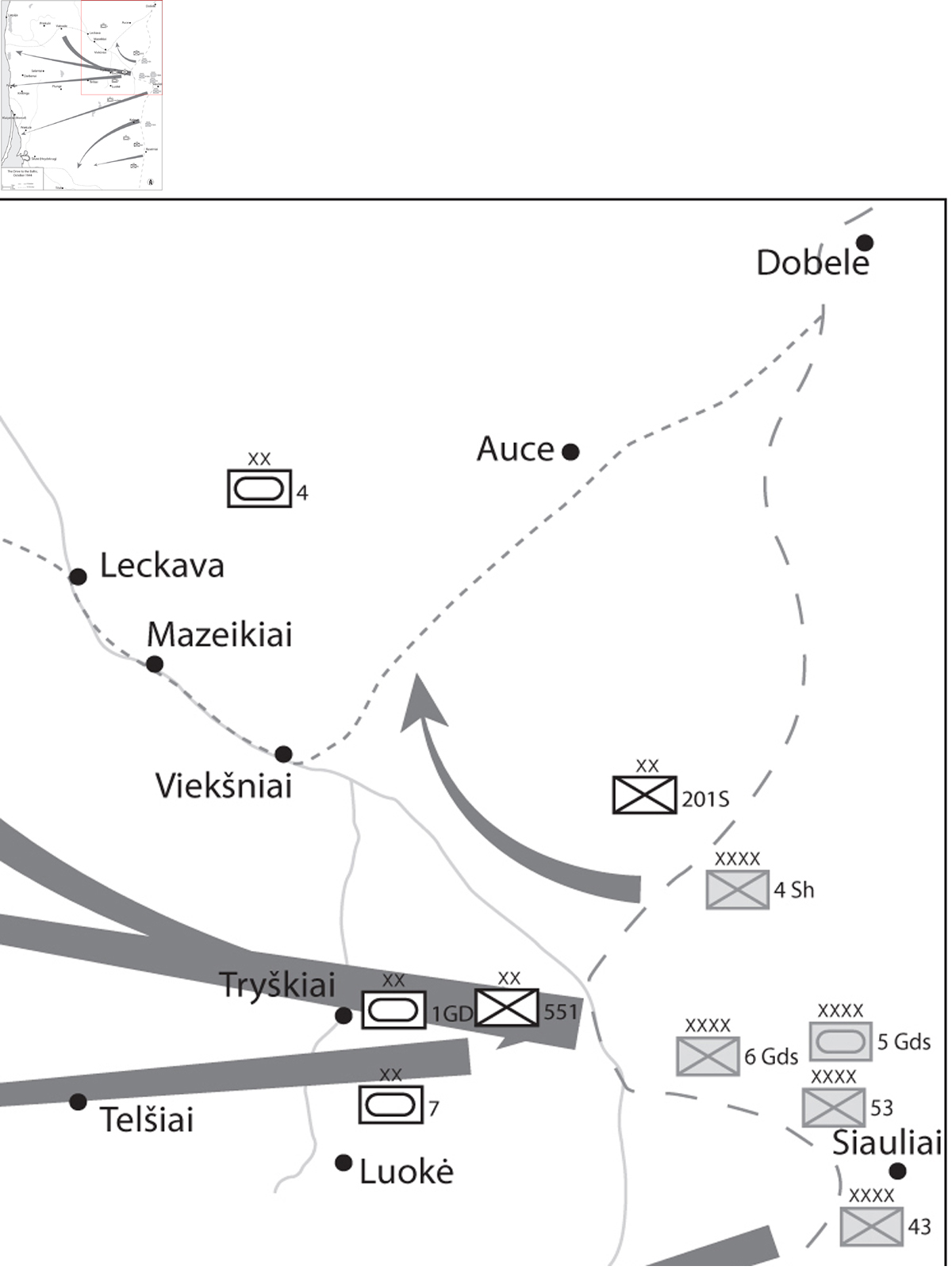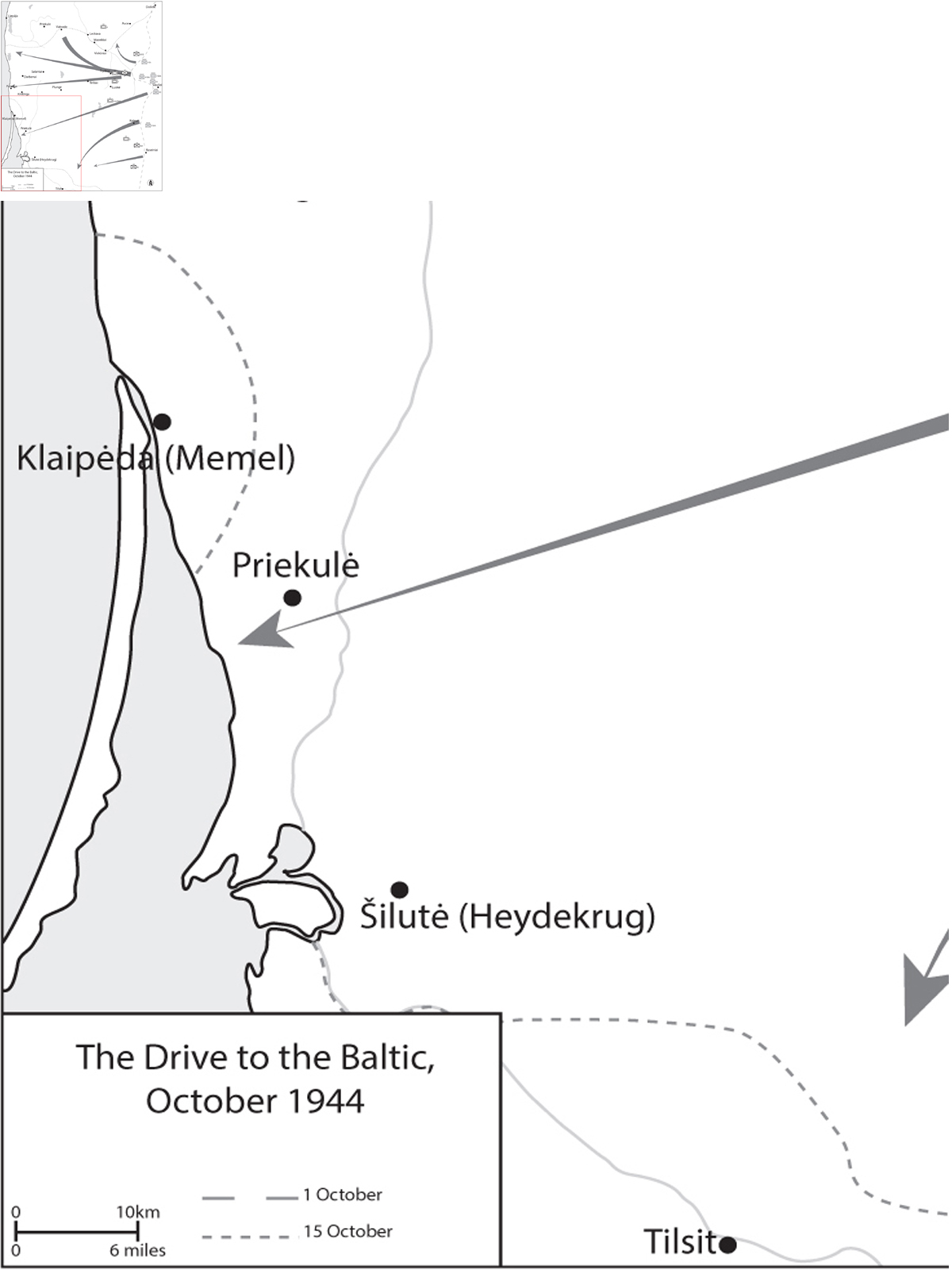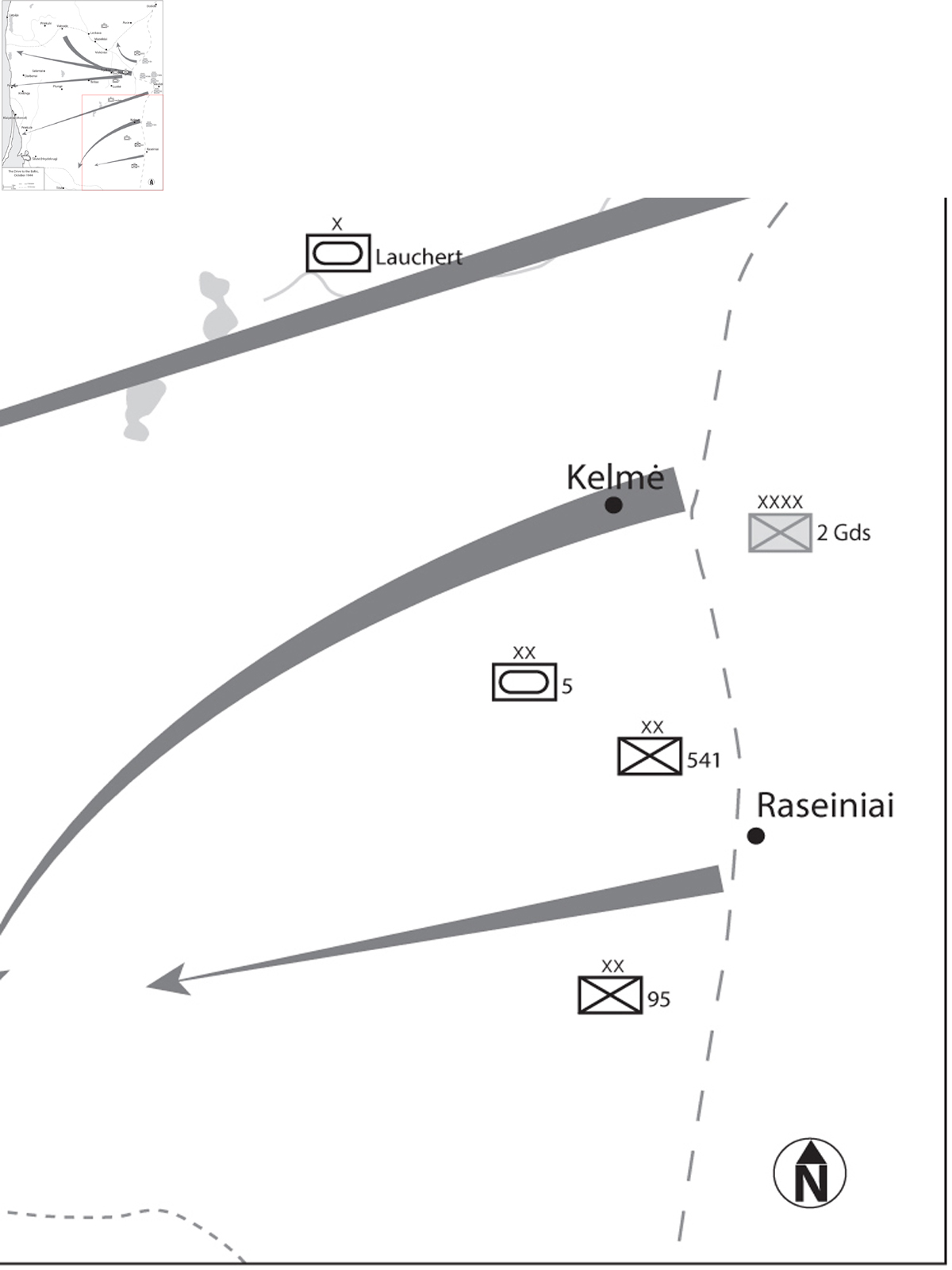Between Giants (47 page)
Authors: Prit Buttar
Tags: #Between Giants: The Battle for the Baltics in World War II

In January 1923, a group calling itself the Supreme Committee for the Salvation of Lithuania Minor declared that Lithuanians in Memelland were being oppressed by foreign powers, and called on the powerful Lithuanian paramilitary organisation
Lietuvos Šaulių Sąjunga
(‘Lithuanian Riflemen’s Union’) to come to the aid of their fellow countrymen. Some 1,000 well-armed volunteers crossed the border and seized control of most of the area, though in Klaipėda itself, Petisné refused to hand over power. There was an exchange of fire on 15 January, which resulted in the deaths of 12 insurgents, two French soldiers and a German policeman. By the time French reinforcements arrived the following day (aboard a Polish ship), the city was under Lithuanian control.
Although the Western Powers deeply disapproved of the Lithuanian action, they were faced with
a fait accompli
in a distant part of Europe, and there was no appetite to spill the blood of their soldiers for such an obscure cause. There continued to be tensions, but a final convention was agreed in 1924, handing the region to Lithuania. Although the convention guaranteed considerable autonomy to Memelland, the German population, who formed 80 per cent of those living within Klaipėda itself, continued to regard themselves as Germans, and wished for reunion with their homeland. The National Socialists first established a branch in the city in 1933, and their strongly nationalist agenda resonated with the German population; the Lithuanian authorities responded by banning the party, and imprisoning its local leadership. Inevitably, this led to protests within Germany, which were exploited by the National Socialists to show that the League of Nations was unable or unwilling to protect Germans in Memelland.
With tensions between Lithuania and Poland continuing, especially in the context of the Vilnius question, there was always a possibility of war between the two countries, and in 1938 the Germans made plans for a seaborne invasion of the territory, supported by land forces in East Prussia, should a conflict break out between Lithuania and Poland. With a resurgent Germany asserting itself aggressively elsewhere, for example in the Sudetenland, the Lithuanian government decided that it was best not to antagonise Hitler, and after Germany presented an 11-point memorandum, Lithuania lifted restrictions on the National Socialist Party, resulting in a huge increase in party membership. Ernst Neumann, the leader of the original National Socialist movement in the territory, was released from prison, and immediately resumed his energetic activities. Many people joined local
Selbstschutz
(‘self defence organisation’) units, organised in a similar way to the SA in Germany and wearing identical uniforms. During the December elections to the local assembly, pro-German candidates secured 25 of the 29 seats.
It was inevitable that German attention would fall upon this small enclave of ‘oppressed’ Germans, and in 1939, Berlin demanded the return of Memelland to Germany in an ultimatum delivered verbally by Joachim von Ribbentrop on 20 March to the Lithuanian Foreign Minister, Juozas Urbšys, who was passing through Berlin on his way home from the coronation of Pope Pius XII. Although the only records of this ultimatum to have survived are from the report that Urbšys gave to his colleagues on his return to Kaunas, it seems that Germany threatened military action unless Memelland was returned to German control.
2
The Lithuanian government felt that it had no real choice. The Memelland Assembly was expected to reconvene on 25 March, and was likely to pass a motion calling for return to Germany, and the threat of German military intervention had to be taken seriously, given German conduct in the Sudetenland. The convention that had settled matters in 1924 did not allow Lithuania to reassign sovereignty over the region without the consent of the other signatories of the convention, so the Lithuanians contacted both France and Britain to discuss the matter. Although both Western Powers expressed sympathy for the Lithuanians, neither was prepared to take any steps to support resistance to the German demands.
Hitler set sail for Klaipėda aboard the pocket battleship
Deutschland
, accompanied by the
Admiral Graf Spee
,
Nürnberg
,
Leipzig
,
Köln
, and a fleet of smaller ships. He intended to go ashore on 22 March, but negotiations between Ribbentrop and Urbšys dragged on into the night, leaving Hitler to cope with the throes of seasickness on a windy night at sea. A five-point treaty was finally signed shortly after midnight, and the following day Hitler was able to enter Klaipėda, at the same time that the German 1st Infantry Division, a formation recruited mainly in East Prussia, marched into the city from the south, led by the division mascot, a large dog.
The loss of Memelland was a major blow to Lithuania. Although it formed only 5 per cent of the country’s land area, it comprised perhaps a third of Lithuania’s industrial base, and over 70 per cent of Lithuania’s foreign trade passed through the port. The resulting dependence upon Germany played a major part in local politics in the months that followed.
In the autumn of 1944, war threatened the area once more. Prior to the first isolation of Army Group North, Bagramian had considered a thrust to the Baltic coast at or near Klaipėda, but decided that the risk to the flanks of any such advance was too great; instead, he opted to turn north and push on to the Gulf of Riga. In late September, the western option once more came under active discussion, and Bagramian received new orders on 24 September, that his front was to move the bulk of its forces from the Riga axis to the Klaipėda axis, in order once more to isolate Army Group North. The entire operation was to be prepared in six days, and executed within a further 11 days. At the same time, 2nd and 3rd Baltic Fronts would renew their attacks towards Riga, to tie down as much of Army Group North as possible, far away from Bagramian’s axis of advance.
3




There were several advantages in switching the axis for Bagramian’s front. Firstly, STAVKA calculated that this could be achieved faster than German forces could be redeployed; it would therefore be possible for Bagramian to operate in an area with far weaker German units facing his assault formations. Secondly, unlike the heavily contested territory immediately west of Riga, the approaches to Klaipėda had seen no fighting since 1941, and the roads and bridges were therefore in relatively good condition. Thirdly, Memelland was currently part of the Reich, and its capture would be an event of great political significance for the Red Army, particularly with Anglo-American forces approaching the Reich’s western frontiers. Nevertheless, the timescale for preparing the operation was daunting, requiring the movement of about half a million men, a thousand tanks, 10,000 guns and mortars, and all their associated supplies, over a distance of up to 120 miles across roads already heavily degraded by the fighting of August and September. In order to release Bagramian’s 4th Shock Army and 51st Army from the Riga axis, 2nd Baltic Front would have to move 10th Guards Army and 42nd Army south, and use them to replace 3rd Shock Army and 22nd Army; these latter two would then replace Bagramian’s armies outside Riga. And, of course, this had to be achieved without the Germans becoming aware of it.
Bagramian and his army commanders began detailed planning on 25 September. It was decided to mass roughly half of the front’s strength on a narrow frontage of only 12 miles, allowing for a concentration of up to 200 guns per kilometre (5/8 mile) of front. 6th Guards Army, with 2nd, 22nd and 23rd Guards Rifle Corps, 103rd Rifle Corps and 19th Tank Corps, would attack across about half the width of the selected sector, aiming to reach the Telšiai-Plungė area within five days. 43rd Army, with 1st, 19th, 90th and 92nd Rifle Corps, would attack alongside, with its axis of advance slightly to the south. 2nd Guards Army, with 11th and 13th Guards Rifle Corps, 44th and 54th Rifle Corps, and 1st Tank Corps, would attack south-west from Šiauliai. 5th Tank Army would be held back as the main exploitation force, intended to be inserted between 6th Guards Army and 43rd Army on the second day to rush on to the Baltic coast. Obukhov’s 3rd Guards Mechanised Corps would be held back as front reserve, allowing it a little more time to recover from its losses in the September fighting.
Secrecy was an absolute priority for Bagramian:
As always, we did all we could to keep the attack preparations secret. This time, we laboured to use every opportunity. First, we rigorously restricted the circle of those in the know. We formally struck the word ‘attack’ from our vocabulary. Everything was carefully planned and executed. This also required well-organised leadership by the staff. General Kurasov [Bagramian’s chief of staff] played an outstanding part in this … in addition, the movement of troops and equipment on all roads during the day was of course forbidden.
This time, we did not rely just upon camouflage, but also sought to mislead the enemy. Generals Malyshev [commander of 4th Shock Army] and Obukhov were ordered to simulate the resumption of the attack on Riga from the south, to strengthen their reconnaissance, to regroup, and to allow trucks to be seen driving to the front. Additional preparation instructions were given via wire communication.
The same happened with General Kreiser in the Jelgava area. We simulated the building of defences at Šiauliai. Obstacles were reinforced, trenches deepened, the network of communication trenches widened.
4
Despite the best efforts of all his staff, Bagramian had to ask Moscow for more time to prepare for the operation. He was relieved when the start of the attack was delayed to 5 October. On the eve of the attack, the Soviet commanders gathered for a final briefing. They were advised that the Germans had established three lines of defence. The main position consisted of a series of field fortifications over a three-mile depth, with a second line of much deeper positions. Finally, there was a third position, stretching from Tilsit to Klaipėda. Although the assessment of the strength of the main position was perhaps overstated, other observations made by Colonel Klebnikov, Bagramian’s intelligence officer, were accurate:
